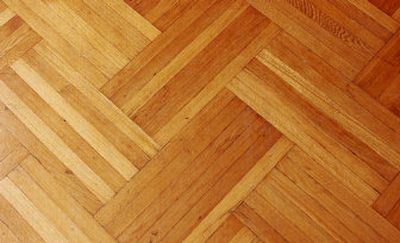recycling with rik

The Elizabethan Room at The Davenport Hotel is the grand dame of Spokane ballrooms. It is reputed to have been Louis Davenport’s favorite. Regally appointed with quarter-sawn oak, the room literally glows. But the allure of its beauty – and years of vacancy prior to the hotel’s reopening – had meant heavy use and some damage.
Al Durazo, owner of D’angelo’s Wood Floors, recalls being called upon in the 1990s to recommend how to repair worn floor sections.
“Other contractors said the floor needed to be entirely replaced,” he remembers. “I thought there was still a lot of life left there.”
Hotel management agreed and hired Durazo to replace damaged boards with matching new ones, and re-sand and refinish the entire floor to bring it back into service. “We recycled it,” he says.
Durazo says homeowners can use this strategy for their wood floors, too. For instance, if a built-in cabinet is removed during a remodel, a “hole” is left in the floor. By taking up the flooring, augmenting the shortfall with pieces that match, and then reinstalling the “salvaged” floor wall-to-wall, the original character of the home is kept intact and the increased value of having wood flooring is retained.
Whether it’s a remodeling project or new construction, homeowners have many choices of floor coverings made from reclaimed/recycled materials or those that come from sustainable sources.
Durazo says two reclaimed options currently available are: antique heart pine flooring sawn from beams from tobacco plantation warehouses and white oak flooring from Eastern barn siding – saw marks and weathering characteristics still visible.
Even with exotic hardwoods, there are sustainable options. Bud Scott, owner of N.W. Trends Floor Coverings and More, says one of his suppliers provides flooring made from an eucalyptus hybrid that has hardwood qualities. The trees are grown and harvested in South America, reaching 200 feet in just 10-15 years.
“People feel good about getting a farmed product,” Scott says. “They want the exotic wood look, but not at the cost of sacrificing a rain forest.”
If it’s not wood flooring, but carpet that’s desired, Scott says here, too, there are environmentally-friendly alternatives for the consumer. He says several manufacturers offer recycled-content carpeting made from post-consumer PET-plastic soft drink containers.
Scott says there’s also re-bond pad for under carpet made from recycled material. When laying new carpet, Scott’s installers pulled up the old pad and ship it to a recycler. The recycler cleans it, re-melts it, and new pads are made.
“All in an effort not to fill up our landfills,” Scott says.
Nadine Sullivan, owner of Eco Depot, says one of her carpet vendors takes old carpet and chops it down into rice-sized chips. Those little chips are heated, rolled and recycled into the backing for new carpet.
“I find people sometimes think recycled means a cheaper or poorer quality,” Sullivan says. “In reality, you’ll find recycled products attractive, durable and high quality.” She says bamboo floors, comparable to maple in hardness and straight-grained, are growing in popularity. Bamboo is also valued because it’s sustainable.
Cork is one of the most sustainable flooring options. It comes from the inner bark of a cork tree and can be harvested without damaging the tree.
Once harvested, the cork tree replenishes itself in about 10 years and is ready for harvest once more. Cork flooring comes in both planks, like tongue-and-groove flooring, and tiles.
Another “old” flooring staple making a comeback is linoleum. One of the most natural floor covering products, linoleum is made from flax, linseed oil, rosin, wood flour, cork powder and ground limestone. It has a jute backing and a wear-life of about 40-50 years.
Finally, Sullivan recommends carpet floor coverings of wool and natural fibers, such as seagrass, hemp and cotton.
“These natural carpets use renewable resources,” she says. “They offer durability without diminishing aesthetics.”
As for pricing, in general, the Green Builder Sourcebook says recycled content padding and carpeting are priced competitively, but linoleum will cost more than low-cost vinyl flooring.
Natural carpet materials are more costly than common carpet materials, but competitively priced with standard high-quality carpeting.